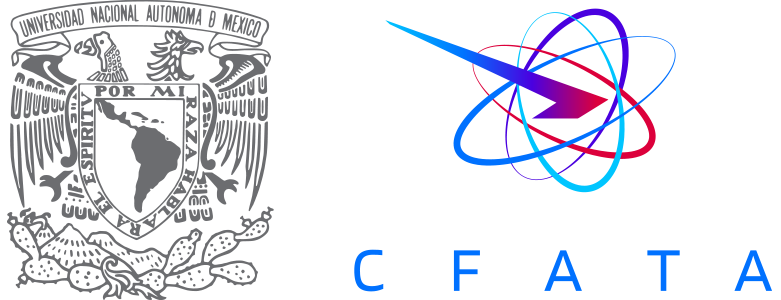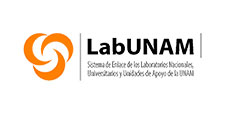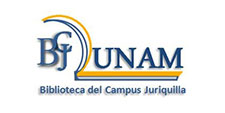Patents
CFATA
Patents
Patent: MX 372151 B in collaboration with the IIM-UNAM
Patent: MX 372151 B in collaboration with the IIM-UNAM
Issuer: Mexican Institute of Industrial Property (IMPI)
Date of patent: 27/08/2019
Title: Obtaining biodegradable polymers soluble in water from the tamarind seed.
Inventors: Alfredo Maciel Cerda ; Alicia Del Real López ; Daniela Wallander Romero
Abstract: The present invention refers to a process to obtain a biodegradable polymeric material, from the powder of the tamarind seed, which is copolymerized with ethyl acrylate by means of a free radical reaction. The resulting copolymer is biodegradable and can be rigid or flexible, depending on the amount of ethyl acrylate added to the tamarind seed powder. Once the copolymer is obtained, it does not dissolve in organic solvents such as ketones and alcohols, as well as in toluene and xylene. In addition, the resulting copolymer is thermoset, so it retains its shape when heated to decomposition. The polymeric material in question can be molded from a paste or a viscous water-based fluid, without using organic solvents. The processes that can be used to mold it are: injection, extrusion, calendering and pressure molding. It can be molded at room temperature, which allows significant energy savings, since the polymers that are traditionally used are molded at high temperatures.
Patent: MX 365181 B in collaboration with the CINVESTAV
Patent: MX 365181 B in collaboration with the CINVESTAV
Issuer: Mexican Institute of Industrial Property (IMPI)
Date of patent: 21/05/2019
Title: Novel procedure for obtaining hydroxyapatite from bone.
Inventors: Astrid Lorena Giraldo Betancur, Mario Enrique Rodríguez García, Sergio Joaquín Jiménez Sandoval.
Abstract: The invention describes procedures for obtaining hydroxyapatite from bone, which has a percentage of crystallinity similar to certified standard samples, which is why said product is of high quality. The described process comprises steps of primary cleaning of the starting material, defatting, deproteinization and optionally removal of carbonates. The process of the invention allows the obtaining of hydroxyapatite with physicochemical characteristics comparable to commercial hydroxyapatites, also having the elements that naturally characterize bone tissue.
Patent: MX 340216 B in collaboration with the CENAM
Patent: MX 340216 B in collaboration with the CENAM
Issuer: Mexican Institute of Industrial Property (IMPI)
Date of patent: 24/06/2016
Title: Wavelength stabilized heterodyne laser.
Inventors: Rafael Quintero Torres, Héctor Alfonso Castillo Matadamas, and Marcos Mendoza Reséndiz.
Abstract: A wavelength stabilized laser is described which, as it is heterodyne, makes it possible to determine the displacement and speed of the object in which the radiation is reflected by means of interference between the two frequencies. The invention involves the incorporation of rings for the discrete adjustment of the intermodal frequency values, which is an element that has not been used in other developments for interferometer sources, and it facilitates the operation of a low-frequency electronic stage in the processing of stability control correction signals. Additionally, the simplified use of a photodiode and the added polarization elements notably simplifies the optical arrangement used for the discrimination of the control error signal, facilitating the reduction of the size of the laser source. The operation is as described, the invention can be applied in any situation where it is required to measure position, speed and acceleration within the limits imposed by technology.
Patent: MX 361448 B in collaboration with the IPN
Patent: MX 361448 B in collaboration with the IPN
Issuer: Mexican Institute of Industrial Property (IMPI)
Date of patent: 17/10/2018
Title: System and device for the generation of arbitrary waveforms based on a biological system.
Inventors: Omar Jiménez Ramírez; Rubén Vázquez Medina; José Luis Aragón Vera, Mario Alan Quiroz Juárez, and Leonardo Palacios Luengas.
Abstract: It consists of the SD-BVAM mathematical model with four non-linear ordinary differential equations from the simplification of the spatial discretization of the reaction-diffusion model proposed by Barrio (1999), which has been used to describe the formation of biological patterns in fish pigmentation. Using a numerical solution system, the system of four equations is discretized to generate arbitrary wave signals with periodic or aperiodic behavior. The behavior or trajectories of the waveform to be generated depend on a control parameter and a set of initial conditions, which allow generating a wide range of arbitrary waveforms in real time. With this system, the use of storage memories, sequencers and multipliers for the generation of arbitrary waveforms is avoided. Additionally, a value quantizer is used to set the resolution of the generated analog signal. Regarding the device, it contains the following main elements: a system of four nonlinear ordinary differential equations (SD-BVAM) that has been used to model the formation of biological patterns in fish pigmentation, a numerical solution system, a quantizer to generate analog signals, a serial communication system to interface with a computer, a numeric keypad, and a display for the configuration data.
Patent: MX 337738 B in collaboration with the CINVESTAV
Patent: MX 337738 B en colaboración con el CINVESTAV
Issuer: Mexican Institute of Industrial Property (IMPI)
Date of patent: 15/03/2016
Title: Method for the transformation of filamentous fungi by shock waves.
Inventors: Miguel Ángel Gómez Lim, Achim Max Loske Mehling, Denis Israel Magaña Ortiz, Erick David Ramos Espinoza, and Francisco Fernández Escobar.
Abstract: The present invention relates to a method for introducing macromolecules such as plasmids or oligonucleotides to the cells of filamentous fungi, for example of the Aspergillus or Fusarium genera. The method of the invention is based on the application of shock waves, which is why filamentous fungal cells can be transformed with heterologous DNA that can encode a protein (including enzymes), or with sequences that control the expression of genes, either heterologous or homologous. With this invention, the genetic transformation of filamentous fungi is more efficient compared to other known methods. The heterologous nucleic acid sequence is operably linked to an appropriate promoter, which is capable of directing the transcription of the nucleic acid sequence.
Patent: MX 344351 B
Patent: MX 344351 B
Issuer: Mexican Institute of Industrial Property (IMPI)
Date of patent: 29/11/2016
Title: Portable optoelectronic device to detect, measure and record ultraviolet radiation (UV) on the ultraviolet radiation index scale (UV-I) to prevent skin cancer.
Inventors: Domingo Rangel Miranda and Daniel Salcedo Peña
Abstract: It is a portable optoelectronic device to detect, measure and record the UV radiation given in UV-I index, which comprises: a solid state optoelectronic sensor to detect the UV radiation incident on a detector window located in the optoelectronic sensor; a photodiode included in the photoelectronic sensor which generates a photocurrent that is proportional to the incident solar radiation on the UV-I radiation index scale; a transconductance amplifier included within the photodiode encapsulation, whose function is to convert the photocurrent into a d.c. voltage signal (analog signal), conditioning the voltage of the signal by means of a resistive-capacitive network; a power source located adjacent to the optoelectronic sensor to bias the amplifier; an integrated circuit located on the main board of the optoelectronic device, whose function is to convert and process the analog signal from the amplifier into a digital signal, wherein such signal represents the magnitude of the incident UV radiation; a random access memory (RAM) for temporarily storing digital data information; a user interface or output port located on the side of the portable optoelectronic device to communicate it with the outside through peripheral modules and, a display screen to display the data stored temporarily in a RAM, which is located on the upper face of the optoelectronic device.
Patent: MX 314565 B in collaboration with the IER-UNAM
Patent: MX 314565 B in collaboration with the IER-UNAM
Issuer: Mexican Institute of Industrial Property (IMPI)
Date of patent: 25/10/2013
Title: Solar cooler for the production of ice operating with the lithium nitrate-ammonia mixture.
Inventors: Roberto Best y Brown, Camilo Alberto Arancibia Bulnes, Octavio García Valladares, Jorge Isaac Hernández Gutiérrez, Adrián Hendrik Oskam Voorduin, Isaac Pilatowsky Figueroa, Carlos Octavio Rivera Blanco, and Wilfrido Rivera Gómez Franco.
Abstract: The solar cooler for ice production operating with the lithium nitrate-ammonia mixture is an intermittent solar cooling system that is mainly composed of a parabolic cylindrical collector (CPC) acting as an absorber-generator, a condenser, a condensate tank. , an evaporator, an expansion valve and a solution composed of lithium nitrate and ammonia. The solar radiation incident on the CPC concentrator is reflected towards the desorber-absorber tank where the lithium nitrate-ammonia solution is stored, which when increasing its temperature and pressure produce 100% pure ammonia vapor which is condensed with cooling water in the condenser, to later be stored in the condensate tank. Once all the ammonia has been produced during the hours of highest insolation, the expansion valve is opened so that the liquid ammonia contained in the tank decreases its pressure and temperature as it passes to the evaporator where the ice is produced by means of the extraction of heat in this component. Finally, the vapor is absorbed again by the lithium nitrate salt during the night, returning the system to its initial state, the following day.
Patent: MX 260456
Patent: MX 260456
Issuer: Mexican Institute of Industrial Property (IMPI)
Date of patent: 11/09/2008
Title: Flame-retardant, waterproof, resistant to microorganisms, low-cost material, made from functionalized rice husk and polymeric resin for the manufacture of molded parts for different applications.
Inventors: Víctor Manuel Castaño Meneses and José Rogelio Rodríguez Talavera
Abstract: The new material, object of the present invention, is a flame-retardant, waterproof material, with high physical and mechanical performance, resistant to microorganisms, and of low-cost, made from chemically functionalized rice husk and polymeric resin through a simple process, friendly for the environment, without the use of solvents, and easy to implement. It is a new material that, due to the novel characteristics of the process to synthesize it, meets the requirements for a low-cost composite material, characterized by having a high percentage of waste material. This material is ideal for the manufacture of different types of panels and a variety of shapes of molded parts, useful for several industrial applications.








